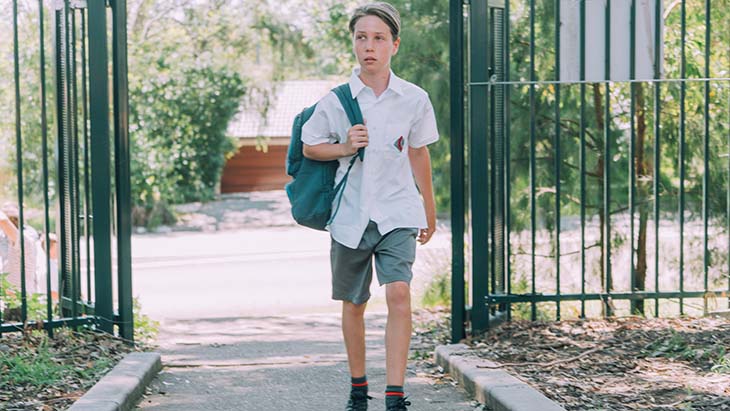Curriculum considerations for cerebral palsy
Creative arts
Some students with cerebral palsy may be very motivated by, and interested in, the arts. Promoting creativity and self-expression may encourage appropriate behaviour, friendships, and self-esteem.
Consider adjusting activities and equipment. Adapted materials may be needed for full participation. For example, thicker pencils and paintbrushes might enhance grip.
Consider the environment to allow safe participation of students with cerebral palsy. For example, check that materials and equipment are at an appropriate height for the student to reach, and that pathways are wide enough for the student to move within.
Consider letting the student work with friends who can assist with motor tasks that the student may find challenging.
English
Some students with cerebral palsy may experience delays with reading and writing. They may need more support and learning time.
It may be helpful to sound out words with the student and show them how to blend these sounds to create phrases and sentences. Some students might need more time and multiple repetitions.
It can be useful to use multiple modes of communication when teaching literacy skills. For example, consider using pictures to teach a concept to students.
Identify what the student needs help with. For more specific strategies for literacy, refer to tips for teaching students with specific learning difficulty.
Mathematics
Students might need support with tasks that require the use of fine motor skills (for example, writing).
Give students plenty of time to learn new mathematical skills. They may need instructions or key concepts repeated multiple times.
If a student uses adaptive technology to assist with everyday tasks, use these in the mathematics classroom. For example, if a student uses a laptop with an adapted keyboard, consider making the mathematics exercises available in an online format.
Consider using adapted materials, including magnetised mathematical equipment such as rulers.

Personal development, health and physical education
Students with cerebral palsy who have challenges with movement, coordination, and balance may find physical activity challenging. In a group setting this might lead to lowered self-esteem and motivation.
To provide a sense of belonging and acceptance, encourage teamwork and give a student with cerebral palsy an active role in sporting activities.
Consider the environment. Check that the surface of the sporting area is not too slippery or sticky for the student to move around. Some students may need to take frequent breaks to manage pain and fatigue.
Human society and its environment
Consider adjustments to teaching style.
Languages
Some students with cerebral palsy may have trouble with speech and this might result in feelings of frustration as well as behaviours of concern.
Assess whether learning a language will be of advantage to them on a case-by-case basis. If they are learning a language, focus on areas of strength and build from there.
A teaching tip that may be relevant is work collaboratively. For example, open communication with the student’s speech therapist may help identify effective strategies for learning a new language.
Science
Some students with cerebral palsy may be unsteady in their movements and may have challenges with balance and coordination.
Consider how the science classrooms can remain safe in order to prevent injury and discomfort for the student. For example, if in a laboratory, check that pathways are wide enough for the student to move within and pay attention to the placement of breakable objects.
Check that students have a workstation that is at an accessible height, has plenty of leg room, and is free from any physical or visual barriers.
Consider providing the student with a lab partner that can assist with measuring, handling delicate equipment, or other manual tasks that the student may find challenging.
Technology
Some students with cerebral palsy might benefit from computer software or modified keyboards to help them participate.
They may have strengths in technologies if they already use these on a day-to-day basis to support their needs.